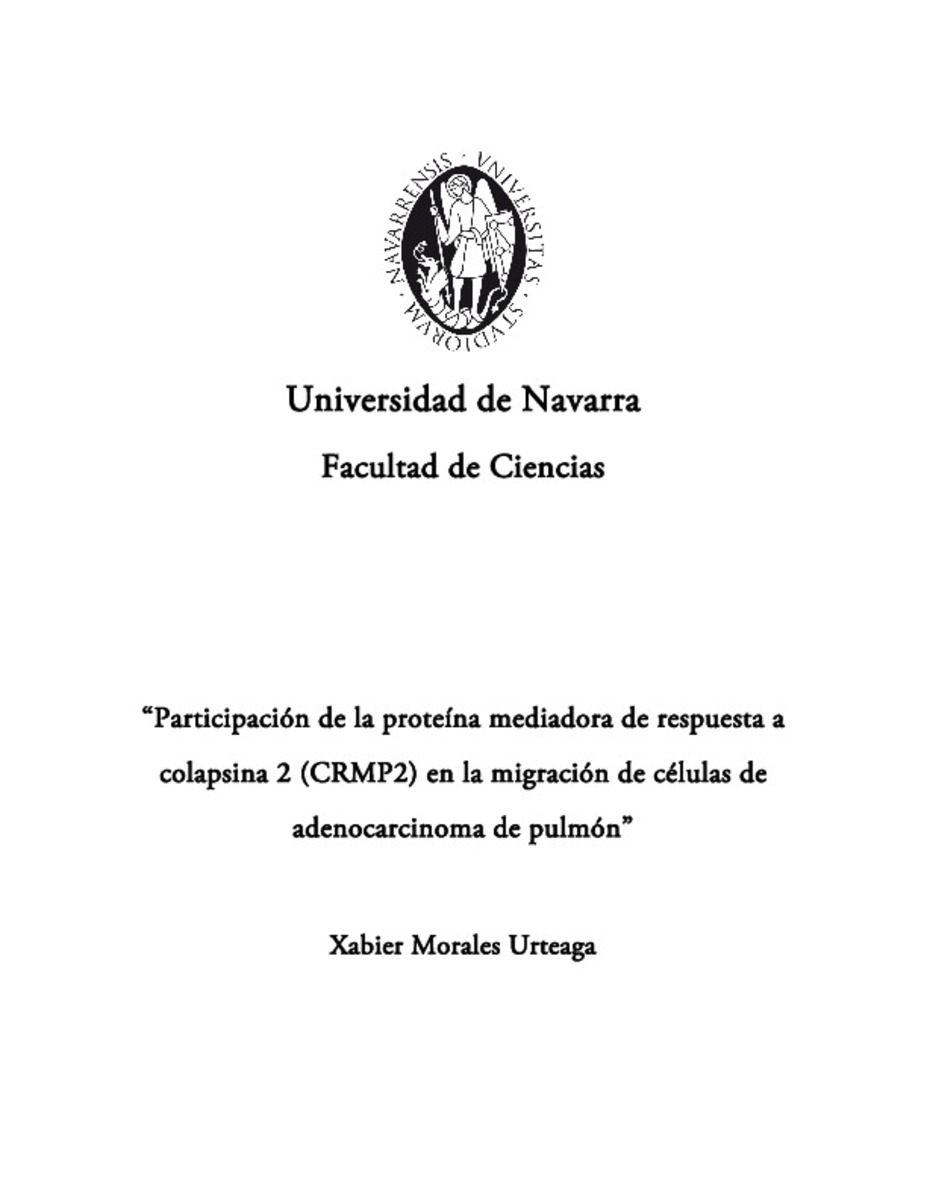Participación de la proteína mediadora de respuesta a colapsina 2 (CRMP2) en la migración de células de adenocarcinoma de pulmón
Keywords:
Biología celular
Genética
Bioquímica
Materias Investigacion::Ciencias de la vida
Defense Date:
18-Dec-2015
Citation:
MORALES URTEAGA, Xabier. “Participación de la proteína mediadora de respuesta a colapsina 2 (CRMP2) en la migración de células de adenocarcinoma de pulmón”. Rouzaut, Ana. Tesis doctoral. Universidad de Navarra, Pamplona, 2015
Statistics and impact
0 citas en

0 citas en

Items in Dadun are protected by copyright, with all rights reserved, unless otherwise indicated.










